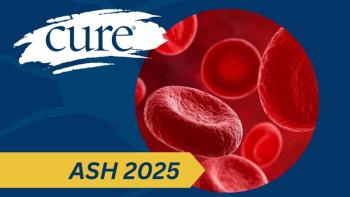
- Immunotherapy Special Issue 2019
- Volume 1
- Issue 1
Immuno 101
Key Takeaways
- Immunotherapy has evolved from early vaccine research, leading to FDA approvals for multiple cancer types, including advanced melanoma and triple-negative breast cancer.
- CAR-T cell therapy represents a significant advancement, modifying T cells to target cancer, offering hope for patients with resistant cancers.
In this special issue of CURE®, we take a walk through history, from revisiting the major medical milestones of immunotherapy to reviewing how far it has come in cancer treatment.
If you follow the mainstream media headlines, you most likely have heard about immunotherapy. It has been pegged a game chang- er in cancer treatment, with many patients reaping the benefits.
Although relatively new to most people, immunotherapy has been evolving for centuries, starting when a doctor investigated why some patients with cancer went into remission after catching the flu or another type of virus. Two French scientists also began researching the use of vaccines and developed one that was used against tuberculosis. It eventually was studied in bladder cancer and remains a treatment for the disease to this day.
The work of those before us led to several Food and Drug Administration (FDA) approvals for immunotherapies to treat cancers such as advanced melanoma; liver, non-small cell and small cell lung, and certain blood cancers; and, most recently, triple-negative breast cancers.
In this special issue of CURE®, we take a walk through history, from revisiting the major medical milestones of immunotherapy to reviewing how far it has come in cancer treatment. We also take a closer look at the approval of Tecentriq (atezolizumab) for women with inoperable triple-negative breast cancer, as well as the benefits of Opdivo (nivolumab) and Yervoy (ipilimumab) for those with liver cancer.
A major immunotherapy advancement has been the introduction of chimeric antigen receptor (CAR)-T cell therapy, which involves altering a patient’s T cells to help fight cancer cells. A diffuse large B-cell lymphoma survivor offers a firsthand account of his journey — both the highs and the lows — of this therapy after relapsing following multiple rounds of chemotherapy and a stem cell transplant.
Also inside: More than 90% of patients may be missing out on potentially lifesaving new treatments, according to the Cancer Research Institute. These therapies may be found in clinical trials, where they are examined in hopes that they will one day gain FDA approval — and 4,000 trials are actively testing immunotherapy. However, sifting through all those clinical trials isn’t always easy for patients. We discuss a clinical trial finder that can connect people with a navigator who will lead them through the process.
In this issue, we also cover dietary factors tied to immunotherapy response in patients with melanoma and the future of immunotherapy in non-small cell lung cancer, and a firefighter shares how CAR-T cell therapy allows him to continue to enjoy life and watch his young daughter grow up.
As always, thank you for reading.
Articles in this issue
about 6 years ago
Into the Future With CAR-T Cell Therapyabout 6 years ago
Walking in His Shoesabout 6 years ago
Keeping Cancer in "Check"about 6 years ago
Avoiding Crashes in the Race Against Cancer With Immunotherapyover 6 years ago
Navigating the Clinical Trial Mazeover 6 years ago
Milestones in Medicine: How Immunotherapy Began in Cancer Careover 6 years ago
High-Fiber Diet Enhances Immunotherapy Response, Study Findsover 6 years ago
On the Double: Immunotherapy Combinations in Liver Cancerover 6 years ago
Breast Cancer Gets a Boost From Immunotherapy



